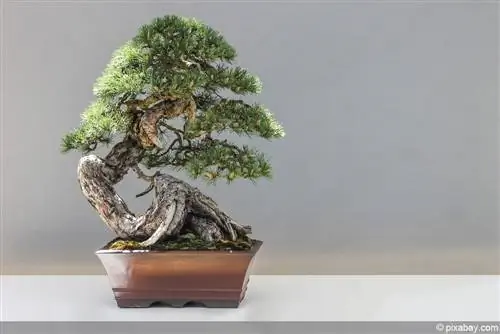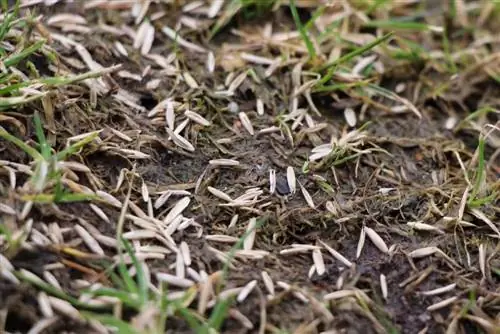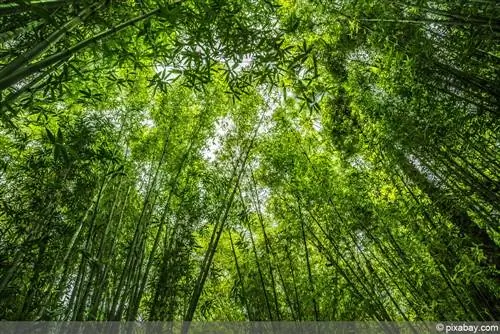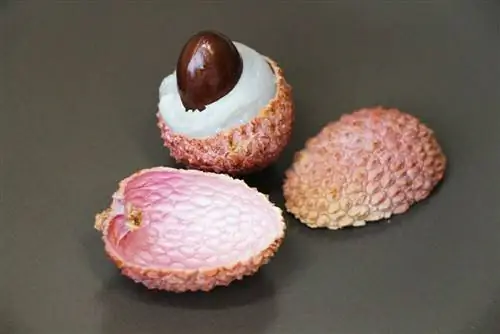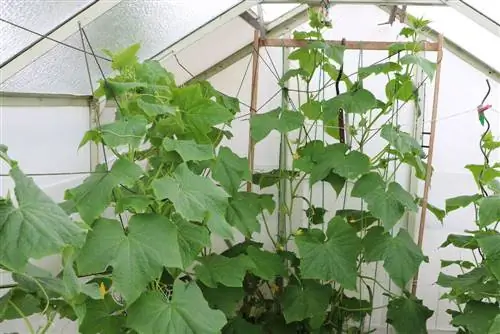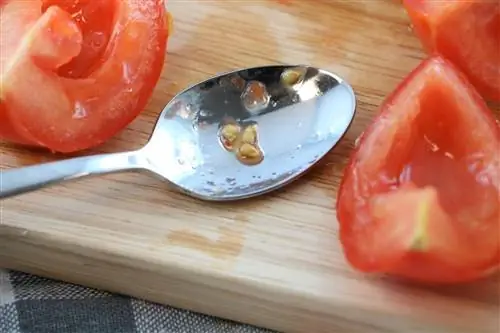- Author admin [email protected].
- Public 2023-12-17 03:39.
- Last modified 2025-01-24 12:45.
Most bonsai lovers buy the objects of their desire as finished trees. They may also get young plants so that they can observe the growth process. However, very few grow the plants from seeds. It makes perfect sense to accompany the tree from germination to planting to full development. The cultivation itself is easy, but requires a lot of patience.
Background
Bonsai trees are small works of art that cannot be found in the wild. Rather, they are made or raised by people. In most cases this happens under the influence of violence. Branches are wired, tied down or sometimes cut off. However, it is much easier and gentler to grow the trees yourself. This means growing from seeds. In this way, you can influence the later form at a very early stage. The problem is that it takes a very long time to get to a tree. On average, it takes around three years for the tree plant to reach a significant size. Patience is essential when growing from seeds.
Seeds
Bonsai trees are not a separate genus or species. As already mentioned, nature does not know the characteristic, small-growing shape. As a result, there are no explicit bonsai seeds that you can purchase from specialist retailers. Instead, you have to get tree seeds, which are best collected directly outside in nature. Chestnuts, acorns or even pine cones are suitable for this. In principle, you can use almost any type of tree. In contrast to many other tree species, chestnuts, acorns and pine cones are much easier to recognize and therefore find. By the way, specialized shops now offer various seed bags for sale from which the respective tree species can then be grown. Depending on the species, the seed material must be specially prepared so that germination is successful.
Accessories
Of course, growing bonsai not only requires seeds, but also various accessories, without which the process would not be possible. These definitely include:
- growing tray
- Growing soil or standard bonsai soil
- Drainage material
- transparent plastic film
- alternatively: small indoor greenhouse
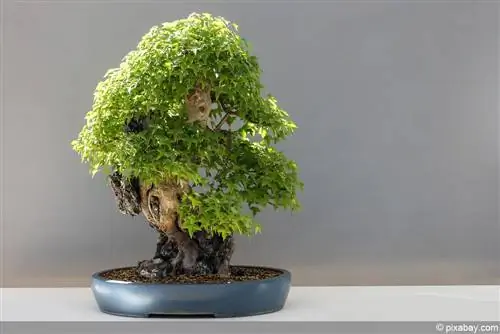
Using a plant lamp can also be helpful. As a rule, this is not necessary if a consistently bright location is available for the plant bowl.
Growing tips
It's a really long way to get to the finished bonsai tree. And of course it's no fun if you fail to grow the plants. However, getting tree seeds to germinate isn't rocket science either. Here are a few important tips:
The right time
Tree seeds should generally be sown in autumn. In this way you follow the natural course of nature. Typically the seed material will begin to germinate in early spring. The resulting seedling then has a whole summer to grow and become stronger. This creates the best conditions for a he althy tree.
Install drainage layer
The tree seed is sown in a planting bowl. Bonsai soil from specialist retailers is perfect as a planting substrate. However, a drainage layer should definitely be installed under the substrate so that the irrigation water can drain away easily. Moisture is of great importance for germination success, but wetness tends to be counterproductive. Suitable drainage materials are:
- all coarse-grained substrates
- Lavastone
- pottery shards
- gravel
- Stones in different sizes
The drainage layer should have a uniform thickness of at least two centimeters and cover the entire cultivation tray. In this context, it is of course also important that the bowl has drainage openings in the base.
Distribute seed material and leave space between them
The seed material is distributed loosely over the entire planting substrate. It is not necessary to press the individual grains into the soil. However, it is important to ensure that there is a certain distance between the individual grains so that the seedlings do not get in each other's way later. One to two centimeters is completely sufficient. The seeds are then covered with a layer of standard bonsai soil about one centimeter thick.
Press the covering soil carefully
The top layer over the seeds should be distributed as evenly as possible. It is important that it is pressed carefully or firmly. However, you should proceed more gently. The soil should be firm but not hard
Always keep the plant substrate slightly moist
Once the thick layer has been pressed on, it is immediately poured on well. The following applies to the further course of the cultivation phase: Always keep the substrate slightly moist.
Choose a bright, warm location
Warmth and light are the most important factors for a seed to germinate. Consequently, the brightest possible location for the plant bowl is mandatory. In addition, there should be a consistent temperature at the location. A temperature of around 20 degrees Celsius is usually sufficient. If you want to be on the safe side, cover the entire bowl with a transparent plastic film, thereby creating a greenhouse atmosphere. However, the foil must contain a few holes. Alternatively, you can also use an indoor greenhouse.
Planting
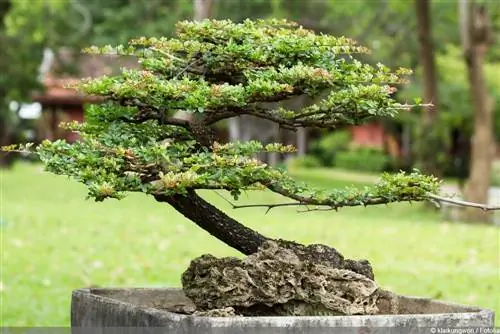
When the seedlings or young plants are a few centimeters tall, you can start transplanting them into a larger container. You have to be very careful when doing this.
Basically:
Transplant bonsai as little as possible.
When digging up the seedling, care should be taken to ensure that neither the roots nor the rest of the plant are damaged. It is best to first remove the soil in the root area carefully and very carefully with a small spoon or wooden spatula. In the new container, a small depression is then created in the substrate into which the roots are then inserted. The area around the trunk is then carefully pressed down and immediately watered well.
Root canal treatment
Even at this very early stage you can influence the tree's later growth. To do this, the roots must be pruned. After removing it from the cultivation tray, the fine roots are carefully removed from the soil. Root parts that have already dried out or are very wet are then simply cut off with disinfected scissors.

